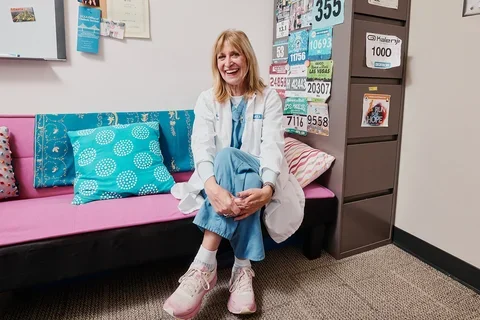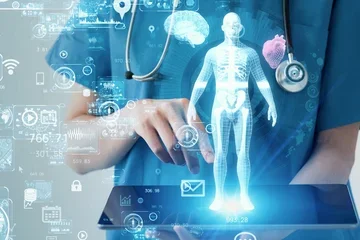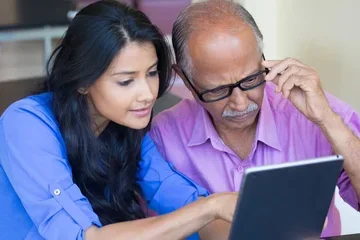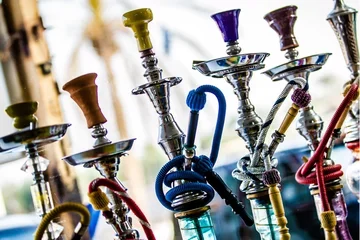Signal to Act
Dr. Barbara Bates-Jensen co-invented a device that can identify subclinical signs of pressure injury — a common concern among people with limited mobility that requires early intervention to prevent serious complications

A UCLA School of Nursing professor, together with a co-principal investigator at Duke University School of Nursing, is undertaking a multi-year, multi-site study to determine the extent to which technology she co-invented can enhance the ability of nursing home staff to intervene early enough to prevent pressure injuries — painful damage to the skin and tissue that most often occurs in people with limited mobility and, when not well managed, can lead to serious infections and even death.
“We think this study will tell us a lot about how we can best implement technology in this type of healthcare setting." – Dr. Barbara Bates-Jensen
Sometimes referred to as pressure ulcers or bedsores, pressure injuries occur because of mechanical forces against the skin — namely, pressure and shear — that inflict damage by cutting off blood flow to the tissues, causing cells to deform and tissue to die, explains Dr. Barbara Bates-Jensen, UCLA Nursing professor. These injuries are a major problem both in acute care settings and in community settings such as nursing homes. According to the U.S. Centers for Disease Control and Prevention, one in 10 nursing home residents will develop a pressure injury. “As nurses, it’s very important that we do what we can to prevent these lesions,” Bates-Jensen says. “They’re costly, they cause significant pain and suffering for the patient, and they have long been associated with the quality of nursing care delivered at an institution.”
For nurses, it’s important to be attuned to which patients are most at risk for developing this type of complication. “Someone who is immobile or unable to move in bed is going to be at high risk from experiencing pressure on the tissues for prolonged periods of time,” Bates-Jensen says. Nursing home residents are vulnerable, Bates-Jensen explains, because they tend to be frail, elder, less mobile, suffering from multiple chronic diseases, and often requiring assistance to move or change positions.
In looking for signs of pressure injuries that will allow them to intervene early enough to prevent significant damage, nurses conduct skin assessments focusing on areas where people are most likely to develop pressure injuries — the sacrum (the bony structure in the lower back, at the base of the spine) and the heels. But this approach has shortcomings. “For a patient or nursing home resident with light skin tones, we can often see that first damage from pressure injury: a redness or erythema of the skin that’s a signal to start our pressure injury prevention program — things like providing support surfaces, repositioning the individual, and ensuring proper nutrition and incontinence care,” Bates-Jensen says. “The problem is that for patients and residents who have medium and dark skin tones, early damage doesn’t necessarily look red, and that discoloration is often missed.”
For most of Bates-Jensen’s career, one of her primary research focuses has been on how to assist nurses in better identifying early pressure injury damage in all individuals, regardless of skin tone. She was initially drawn to a device that measured surface electrical capacitance — the amount of fluid in a specific area of the skin — as an indication of localized edema. Bates-Jensen coined the term sub-epidermal moisture, or SEM, to describe the early pressure injury damage at the sacrum and heels that was picked up by the technology in a large National Institutes of Health-funded study. “The technology was quite good at detecting, and even predicting, damage underneath the skin, which meant it didn’t matter what color the skin was,” she explains.
The drawback to that technology was that it was bulky and clinically impractical. So Bates-Jensen collaborated with two UCLA professors — one a computer expert, Dr. Majid Sarrafzadeh, and the other an electrical engineer, Dr. William Kaiser — to co-invent the SEM scanner — a small, handheld device that uses surface electrical capacitance methods while controlling for the pressure when the sensor is applied to the skin. Through UCLA’s technology transfer program, the device was licensed to Bruin Biometrics, and the company received FDA approval for the device in 2019.
Now Bates-Jensen and Dr. Tracey Yap, a professor at the Duke University School of Nursing, are co-principal investigators on a large NIH-funded study seeking to determine whether putting the SEM scanner in the hands of nursing home personnel will result in their acting earlier to prevent pressure injuries in their frail, vulnerable population.
The researchers are currently in the middle of a four-year study at multiple nursing home sites in New Mexico. As part of an eight-month intervention, the study team is working with the licensed nurses and nurse aides at these homes to incorporate the SEM scanner into standard skin inspection procedures, with results used as a cue for nursing staff to initiate pressure injury prevention. In addition to measuring the efficacy of SEM assessment, the researchers will examine the feasibility of incorporating the technology in nursing home settings, as well as the ability of the scanner to detect pressure injury damage in individuals with medium and dark skin tones.
“In the past, the nursing home environment has been very low tech,” Bates-Jensen says. “While using the device is fairly simple, it has to be incorporated into existing processes within the nursing home. There are also extreme shortages and high staff turnover rates in these settings, which can pose practical barriers. We are excited to get the feedback from the nursing home staff on what worked well for them and what were the struggles. We think this study will also tell us a lot about how we can best implement technology in this type of healthcare setting, as well as adding to the growing data looking at skin tones and how that may impact the delivery of care.”



